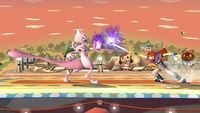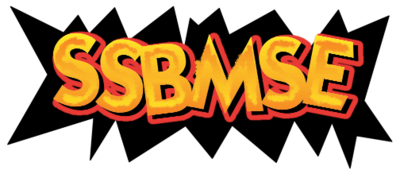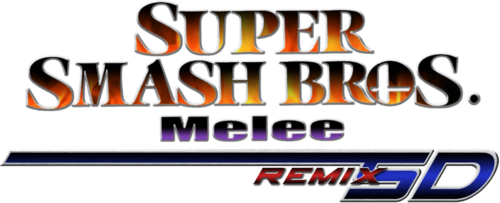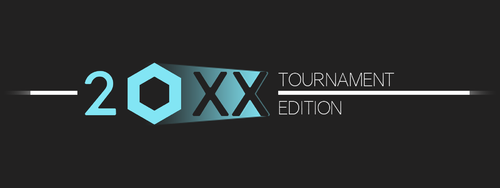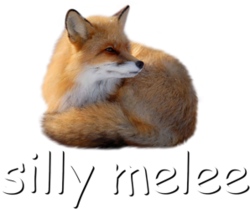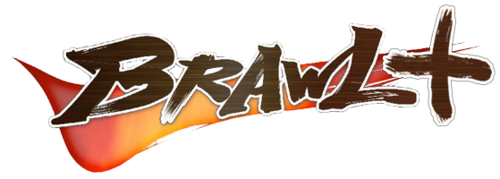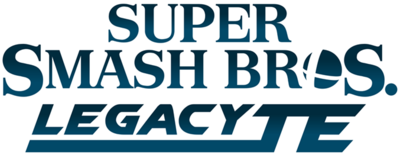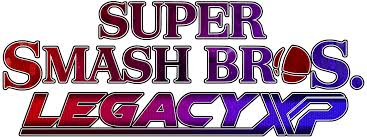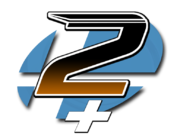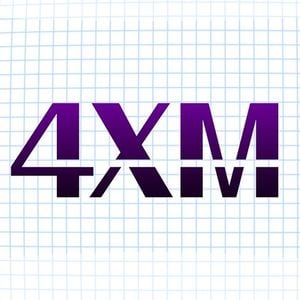Gameplay modification
In addition to cosmetic hacks such as file replacement, modifications to the gameplay of individual games, shorthanded to mods, have become a widespread phenomenon within the hacking community. The first attempts at modding involved Brawl, with such projects generally being viewed as novelties, not unlike the modification of palette swaps for characters; outside of this, forcing the Wii to load such mods was considered difficult, requiring use of the now-inoperable Twilight hack. The increasing complexity of game play mods and the discovery of the Smash Stack exploit, however, caused the mods to develop considerably more attention with observers.
Brawl remains the most commonly modded game in the series, though some mods also exist for Melee, Smash 64, and Smash 4. A majority of mods for Brawl can be loaded through the Smash Stack exploit, though alternate methods for loading them are available; mods for Melee often require the use of applications available for The Homebrew Channel. 19XXTE, a gameplay mod for Smash 64, requires patching a ROM image of the game, while a variety of experimental mods for Smash 4 on Wii U make use of a kernel exploit built into the console's internet browser.
Within the hacking community, the base game without any mods is often referred to as vBrawl or vMelee as a contraction for Vanilla Brawl or Vanilla Melee; the term "vanilla" comes from a common terminology featured in the computing world.
Overview
Specific changes to the game depend on the preferences of the developers, as well as their ultimate goal. There are a few different categories most mods fall into:
- Balance mods don't change the core gameplay and apply buffs and nerf to characters to reduce competitive inequality between characters
- Overpowered mods give every characters huge buffs so that everybody is equally overpowered.
- Melee-inspired mods change the gameplay and movesets to be more fast-paced and technical like in Melee, sometimes adding mechanics such as wavedashing.
- Competitive mods don't change anything gameplays-wise, but add features for players to practice their skill and/or improvements for tournament play, such as quality of life changes.
- New character mods try to bring new characters into the game with new 3D models, animations and movesets, either replacing characters or being a new addition.
Due to the Smash Stack exploit and relative ease of hacking the Wii compared to other consoles, alongside the popularity of Project M, modifications for Brawl are considerably more widespread than for any other game in the series.
Stages
In addition to raw gameplay, other portions of the game may be overhauled by developers to further change gameplay. The changing of stages is among the more common ways to do this;
In Brawl
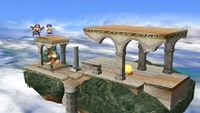
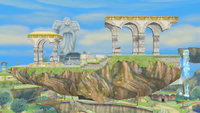
In Brawl mods, it has been possible for quite a long time to create new stages replacing others. It is also possible to use newly created slots on the stage selection screen or alternative stages that load when holding a specific button when selecting a stage.
Brawl- and Project M for instance, replace the ordinarily over-sized Temple with a smaller, more condensed version. Stages with transformations like Castle Siege or Pokemon Stadium are often changed to stay at the most competitive form of the stage. Outside of this, unpopular stages might be entirely replaced with others, such as how Project M replaces the highly non-standard Mario Bros. with a rendition of Fountain of Dreams from Melee.
Legacy TE added stages with the design of stages used for competitive play for each stage, using its theme in background models and textures and playing the same background music, that load when holding the Start, L, or Z button. Legacy XP added a lot of over 700 new stages into the game using new slots on the selection screen, as well as variants when holding down specific buttons. Button Shortcuts to quickly select popular Project M stages have also been added. Smash 2 added all stages (with the exception of Poke Floats) that were in Melee back into the game. Outside of stage layout changes, some textures and tracks may be replaced, particularly in the case of original stages.
In Melee
SD Remix, released in 2015, features 3 pages of stages: One for the vanilla stages, one with 1 player mode only stages and one for newly created stages with some inspired from other games.
In 64
19XX modifies the stage selection screen to contain otherwise unplayable in versus mode stages Battlefield, Final Destination and Meta Crystal. 19XXTE 's selection screen contains 11 instead of the original 9 slots for stages, 19XXCE has 16 slots.
In 2018 modders found a way to change stages, first only replacing Hyrule Castle but later it became possible to replace all stages. The mod SSBMSE replaces most stages in the game with more competitive stages modeled after their appearance in other Smash games.
In version 0.8.2 of Smash Remix it became possible to include new stages that don't replace old stages. Its stage selection screen featured 3 pages each with 9 slots of stages (like in the original game), the first containing the original stages, the second mainly stages from SSBMSE and the last mainly 1 player mode stages.
In Smash 4
Creating new stages is possible in Super Smash Bros. for Wii U.
Gameplay modifications
Gameplay modifications for the games are intended to, as their name implies, modify how the actual gameplay works. Character movesets or even the core engine might be changed, techniques might be removed, altered or newly added.
Animations/Models
In Brawl
For Brawl the tool BrawlBox easily allows modders to replace models and animations. Brawl mods usually feature a lot of new custom models and animations.
In Melee
For Melee editing animations or models is very limited and rarely done.
In 2017 the Smash 4 modding tool Smash Forge became compatible with Melee making it possible import new models over models over Melee characters [1]. Some small mods that replace a costume of a character have been created, for example a Ryu model import over Captain Falcon [2]
In SD Remix a few characters got different animations for some moves reusing animations from different moves, for example Pichu used his roll animation for his Dash attack [3] and Bowser his aerial item down-throw for his Down aerial [4]. In March 2019 the first custom animation on a Melee character happened: Falco got his Forward Air imported from Ultimate [5]
In 64
For Smash 64 editing animations or models is also very limited. In 2019 Smash Remix became the first mod with these features: A Ganondorf model replacing Captain Falcon got newly created animations for his smash attacks where he uses a trident weapon.
In Smash 4
For Smash 4 there is a tool called Smash Forge for changing models and animations [6]. Mods replacing Fox with Wolf [7] and Dr. Mario with one of the Ice Climbers [8] from their Brawl appearances have been created.
Adding new characters
In 2013, the addition of characters has become a possibility for Brawl mods. Project M notably added Roy and Mewtwo as playable characters in version 3.0 after the absence of the duo in Brawl. In 2015 a build called Project M Ex was created, mainly by hacker PyotrLuzhin/Петр Лужин, that worked as template for builds to easily add new slots for characters. It included all characters present in Project M and Ridley. All future builds that were based on Project M (Legacy XP, Smash 2) and added new characters are based on this template, and mods like Brawl- switched to this template reimplementing their changes.
Brawl- added Pichu, Roy, Mewtwo, and newcomer Waluigi to the game. Newer mods based on Project M like Legacy XP add even more characters, that might have never been playable, into the game with completely original movesets.
As of version 0.9 of Smash Remix, a Smash 64 mod, 4 characters have been added, Ganondorf, Young Link, Falco, and Dr. Mario, alongside the original 12. More original characters are also planned for the mod.
Adding new characters to other games is not possible as of 2019, only replacing others.
Notable gameplay mods
Super Smash Bros.
19XX
19XXTE (Tournament edition) is the first and most notable of gameplay mods involving Smash 64. Similar to the concurrently developed 20XX, 19XXTE is intended to assist players in training their skills for professional play in Smash 64, as well as adding various improvements for tournament play, such as a Match timer and allowing for access to the ordinarily unplayable stages Battlefield (SSB), Final Destination (SSB), Meta Crystal and cloudless Yoshi's Island. The mod has notably seen use in most Smash 64 tournaments since Hitstun 3 in late 2015, including GENESIS 3, the first tournament with over 200 participants.
19XXGE (Genesis edition) is more or less identical to 19XXTE and got it's name from being designed for the GENESIS (series).
19XXCE (Complete edition) has more content, such as a bigger stage selection screen including all 1P only and unplayable test stages and an enhanced training mode with options for hitbox display, color overlays, flashes on Z-cancel, the option to set the percentages and more.
SSBMSE
SSBMSE (More Stage edition) [9] is a modification with the goal to add more tournament viable stages to the game. Version 0.3 was released in April 2019 and features Kalos Pokemon League, Smashville, non-transforming Pokemon Stadium and Final Destination (Melee) in addition to Dream Land, Yoshi's Island (SSB), Battlefield, Final Destination (SSB) and Meta Crystal.
Super Smash Bros. Hex
Super Smash Bros. Hex [10] is a modification that attempts to make the characters more balanced by applying buffs and nerfs to all characters. Version 1.0 was released in July 2017.
Super Smash Bros. Melee
Melee: SD Remix
Melee: SD Remix is the first of notable of hacks involving Melee. SD Remix holds some niche appeal amongst some devoted Melee players. The concept behind Melee: SD Remix can be compared to that of Balanced Brawl; both mods avoid making changes to to the game's base engine in favour of buffing and nerfing individual attributes of characters to make the game more balanced. Some stages have also been altered as to allow for better competitive gameplay. The development for SD Remix continues today, but appears to have slowed down, with the last version being from 2015.
As of July 5 of 2015, a version loadable from a memory card, titled SD Remix Lite was released, it's also the only memory card mod that can run with full features on all versions of Melee, including NTSC/NTSC-J 1.00, 1.01, 1.02 and PAL Melee, and even though it's named version 3.2 it still contains all fixes of SD Remix Full 3.2.1.
20XX
The 20XX Melee Training Hack Pack does not feature any true modifications to Melee's gameplay; rather, as its name suggests, it modifies Melee's overall user interface to allow players to train their skills for professional Melee tournaments. Hacks, for instance, can allow players to flash differing colours to allow for practising of L-cancelling or allow for players to view hitbox data for the game's various characters. Other, minor hacks are also available, allowing for players to modify stages, use PAL versions of characters, or use unique costumes.
An extension of the 20XX Melee Training Hack Pack is the 20XX Tournament Edition. Developed by professional Melee player Dan Salvato, 20XX Tournament Edition features various hacks to streamline the mod's performance in tournament use, as well as other minor improvements, such as widescreen support; it also uniquely runs via hacked save data on a GameCube memory card, allowing for it to be spread through the standard software found on either the GameCube or Wii.
Silly Melee
Silly Melee [11] is a modification of Melee with the purpose of making every character overpowered. Made by Alpharad and MagicScrumpy with assistance from Casey O'Rourke it is self described on its official website as "Very, very silly. Characters do things that they never should have been able to do." Version 1.0 was released in December 2015.
Super Smash Bros. Brawl
Balanced Brawl
Balanced Brawl is unusual amongst Brawl mods in that it does not significantly alter the core gameplay physics of Brawl. In its attempts to make the game more balanced, it instead primarily focuses buffing and nerfing all the characters, as well as adding some universal nerfs, such as altering how ledges work in order to combat planking. In addition to its various character tweaks, some of the stages were also changed, though not to an extent seen in other mods; most stage hazards are still present, but instead are either weakened or occur less often. Likely as a result of its lack of immediately visible changes, Balanced Brawl was unable to find the popularity of other mods for Brawl, though it did attain a small niche composed of those who opposed the changes made by Brawl+.
While not officially abandoned, the last notable update for Balanced Brawl, version 3, was released in 2010, with only a 2011 bugfix patch for PAL regions being released since then. Because of the effectively ceased development, Balanced Brawl is generally considered to be antiquated. As its last version was based on the Brawl metagame from 2010, some notable developments are not reflected in Balanced Brawl, such as the emergence of Olimar as a top tier character, as well as the gradually decreasing dominance of Snake.
Brawl-
Brawl-, like most other Brawl mods, attempts to change the cast and physics of Brawl in order to make the game more balanced. As a farcical jab to the then-concurrent mod of Brawl+ and its careful use of appropriate nerfs and buffs, the changes to the characters and physics in Brawl- are intended by the developers to be absurd and over-the-top in comparison; Brawl-'s development has relied on the mantra of "if everyone is broken, no one is". Hitstun, for instance, has been drastically increased as to allow for combos that are much easier to perform than either Brawl or Melee and all characters now have the ability to wall jump. In addition, instead of giving characters a mix of appropriate buffs and nerfs to balance the cast, all the characters have been buffed to ridiculous levels and each given a plethora of new, very powerful options; Ike, for instance, can charge Eruption and store it, allowing for a powerful kill move. The mod is noteworthy for being the only major Brawl mod aimed towards casual players instead of competitive players, though the mod is still intended to have competitive balance.
Brawl- enjoyed considerable popularity and attention when first released in 2010, and it became the most popular Brawl mod among the fanbase in this time, due to its more obvious changes compared to Balanced Brawl and its less controversial changes compared to Brawl+; the game was even featured as a side-event at some Brawl tournaments, such as at Apex 2010. As Project M got farther into development and started releasing more complete builds, however, Brawl- would become eclipsed in popularity, though it still has a large, devoted cult following. Despite the diminishing popularity and lack of representation at tournaments, development for Brawl- continues to this day, with builds being released into 2017.
Brawl+
Brawl+ was the first notable gameplay mod available for Brawl, and it also became the first mod to develop its own tournament scene, though such tournaments were not recognised as official. The mod featured multiple tweaks to gameplay that would later be seen in most future mods; in addition to changing the physics engine, some stages were changed in order to make them fit the guidelines for legality within tournaments, and individual characters had various attributes nerfed and buffed in an attempt to reduce competitive inequality between characters. Despite popularising the concept of modifying the base gameplay of Brawl and even being featured as a side-event at some Brawl tournaments, Brawl+ was immediately controversial to some members of the community, due to the fact that most of its changes were seen by many as solely attempting to make Brawl play exactly like Melee, particularly in regard to changes to individual characters, such as Fox and Jigglypuff having become altered to make them almost identical to their Melee counterparts. Brawl+'s own staff became estranged and antagonistic towards each other because of controversies over the development and ultimate goal of the mod.
Development of the mod ceased in 2010, with version 7.0.3. Most of its staff moved onto Project M, a mod with a similar design philosophy to Brawl+, but with a more concentrated and slightly different goal. Today, Brawl+ is mostly viewed as a curiosity amongst Smashers who are interested in seeing how the hacking scene of Brawl first started.
Project M
Project M can be seen as a spiritual successor to Brawl+, due to the two mods sharing much of the identical staff. Project M features many of Brawl+'s previous physics changes, but was able to distance itself from the previous mod and its related controversies by giving more thorough changes to all characters. Of all Brawl gameplay mods, Project M remains the most popular, due to its altered physics engine that makes it play similarly to Melee and thorough nerfing and buffing of all characters in the game; although aimed primarily at hardcore players as opposed to casual gamers, Project M's considerable "fanservice", such as the inclusion of Roy and Mewtwo, new palette swaps that reference more video games than Brawl's standard selections, and other such interests have allowed it to reach popularity amongst such players. Project M's popularity led to it eventually becoming a notable side-event in tournaments, and it later developed its own distinctive tournament scene, with Apex 2014's Project M event attracting even more entrants than Brawl's.
Newer revisions of Project M had other additions to the game, such as added multiplayer modes, new maps, and a new announcer, with the last major revision being 3.6. While intended to include several completely new characters in its next revision, as well as further buffs and nerfs, development on Project M ceased on 1 December 2015, due to concerns over the legality of the mod. Despite this stoppage, Project M continues to maintain a devoted following, with tournaments for it still being organised.
Legacy TE
Legacy TE is a tourney-viable modification of Project M 3.6 that aims to add new content while also keeping core, fundamental gameplay unmodified. It features a variety of tourney-safe alternative stage skins, costumes, and quality of life features. This includes shortcuts to edit a players' controls without leaving the character selection screen, an improvement to character files to reduce crashing likelihood, and an improved menu interface. A debug menu made for the mod allows players to train their skills for professional tournaments. For example, there is an option to show DI lines that show how directional influence affects where an attack sends an opponent, with a clearly defined end point that either aims to the ground or stops in the air. A variety of tools and resources have also been made for the mod, allowing tournament organizers to easily customize their builds, including changing the stagelist, replacing costumes, or editing brand assets on menus. Legacy TE has received worldwide adoption and is generally considered the go-to edition of Project M by tournament players. Version 2.11 was released in January 2019. Version 2.5 was released on August 26, 2019, and features 15 costumes per character, stage alt toggle options in the code menu, and many other features.
Project+
Project+ is a modification of Project M 3.6 (based on Legacy TE) with the aim to improve the balance among the cast by making small moveset changes to all or most characters. It is intended to become tournament standard. Development started in 2018 and version v1b was released in April 2019.
Legacy XP
Legacy XP is a modification of Project M 3.6 that includes more characters, 700+ additional stages and new modes. While the characters from Project M were mostly unaltered (Yoshi and Link received some non-PM 3.6 moveset-fixing edits and Snake got the ability to walk while using his box taunt), 10 more fighters were added: Young Link, Pichu and Doctor Mario returned from Melee and Ridley, Waluigi, Geno, Lucina, Metal-Sonic were added in the beta build released in September 2016. Shadow and Mage Ganondorf (inspired by his Ocarina of Time appearance) followed in version 2.0 Full in May 2018. Version 2.1 featuring some balance changes was released in March 2019.
Legacy XP Lite is a combination of Legacy XP with some of the more competitive friendly stages from Legacy TE greatly reducing the number of stages and the mod size from over 5 GB to under 2 GB. Version 2.1 was released in March 2019.
Smash 2
Smash 2 [12] is a modification of Super Smash Bros. Brawl that was designed to be like Melee if Nintendo had more time to develop it (leading to more characters) which makes it even more similar Super Smash Bros. Melee than Project M. In addition to the engine changes from Project M stage camera and lighting were edited and the movesets of all Melee veterans were made to be like in Melee with small buffs to the worse ones. For the newcomers in Brawl the half-clones Wolf and Lucas were designed to be more similar to the characters they were cloned from and for other characters abilities they that originated from games released after Melee got replaced (for example Dedede's Jet Hammer).
Wave 1.1 released in November 2017 had 32 characters (Zelda & Sheik sharing one spot in the character select screen), Wario, Wolf, Lucas, Dedede, Snake and Sonic in addition to the 26 from Melee. In wave 1.8. released in July 2018 Diddy Kong and R.O.B. were added, but Lucas and Wolf were removed which caused a lot of controversy among the devs and fans and ultimately led to a lot of the devs leaving and the end of Smash 2's development. There were plans to add the remaining Brawl characters that at the time of Melee's release already appeared in a game (Meta Knight, Zero Suit Samus, Pit & Olimar, not Toon Link however) and replace Ike & Lucario with Alm [13] (from the 1992 game Fire Emblem Gaiden [14] having a similar moveset to Ike) and Togepi (with all it's specials being Metronome [15] having random effects).[1]
Smash 2 Plus
Smash 2 Plus can be seen as the spiritual successor of Smash 2.
In version 1.5 released in December 2018 Wolf & Lucas are added back and Olimar & Toon Link are newcomers and in version 2.0 released in June 2019 Meta Knight & Zero Suit Samus appear as newcomers. Mute City returns which makes Poké Floats the only Melee stage not in Smash 2. A code for Melee random character select was added, where pressing A next to the character selection screen gives you a random character.
Super Smash Bros. for Wii U
Melee inspired
4XM [16] is a modification of Super Smash Bros. for Wii U that aims to change the engine to make the game more like Super Smash Bros. Melee and add most mechanics like L-Canceling and Wavedash back. Development started in 2017 and in January 2019 4xM Beta v1.4.3 was released.
USM-eM [17] is another modification independent from 4XM with the same goal.
Balancing
Super Smash Bros. Better [18] is a balance modification of Super Smash Bros. for Wii U. Version 1.8.1 was released in July 2018.
There are more mods with the same approach such as B4lanced [19] and Sm4sh Remix [20].
Super Smash Bros. Ultimate
Project M Definitive Edition
External links
- Smash Mods (archived), a forum devoted to discussing and improving various gameplay modifications.
- BrawlVault, a database with many Brawl mods and custom models/textures
- Brawl, SSB4 3DS, SSB4 WiiU, Ultimate on modding and development community GameBanana
References

